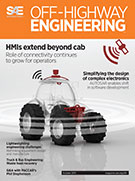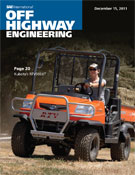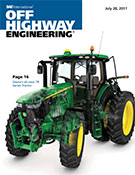Magazine

SAE Truck & Off-Highway Engineering: April 2018
2018-04-05
Connectivity takes center stage Telematic links have become the norm, helping fleet owners and operators improve efficiency and letting OEMs predict component failures. More power, less noise, fewer emissions These key attributes drive development of new generators both big and small. TARDEC pursues advanced power generation U.S. Army, GM collaborate on fuel-cell-generated electricity to power the vehicle's propulsion system and onboard electronics, while providing off-vehicle power via an Exportable Power Take-Off unit. Developing an alternative engine concept Ricardo's CryoPower engine leverages two unique combustion techniques for reduced emissions and fuel consumption-liquid nitrogen and split combustion. Long-haul trucking and stationary power generation will be the first beneficiaries of the technologies. Technology time-warp The road to autonomous driving has been under construction for decades, as showcased by SAE's Mobility History Committee at the 2018 WCX in Detroit.



















